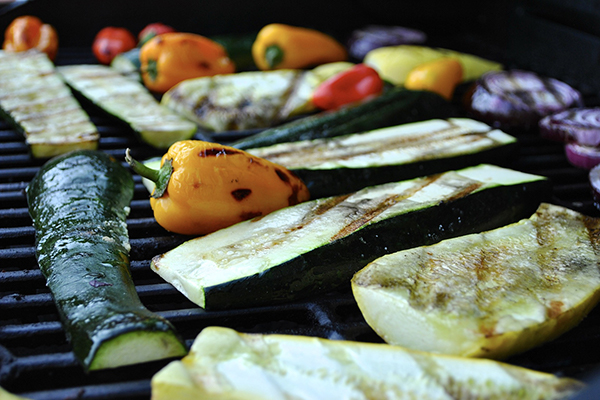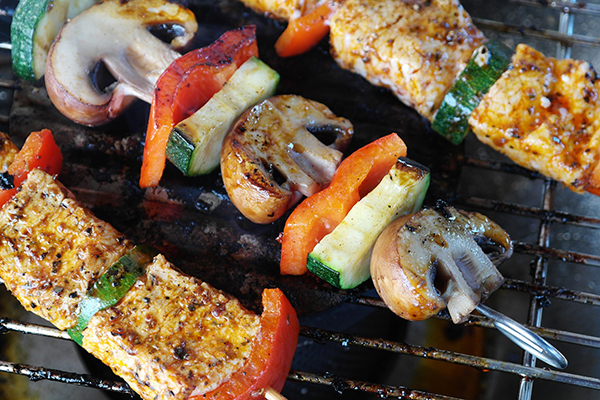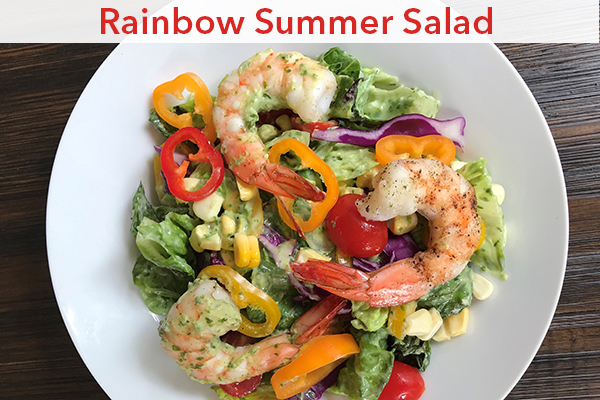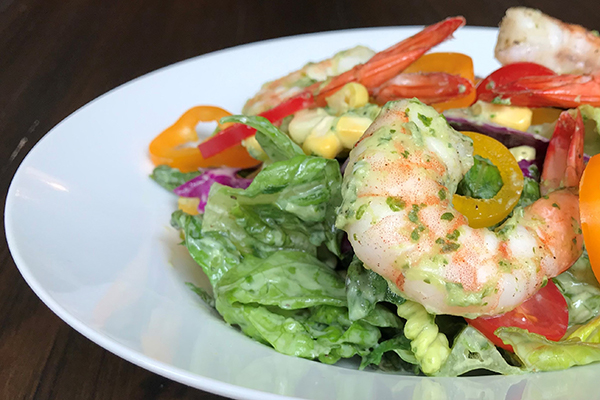It’s that time of year again — picnics, parties, and backyard cookouts. The smells of summer are starting to permeate the air — fresh cut grass, honeysuckles, sunscreen, and the aroma your neighbors’ dinner floating from their grill into your nose.
The grilling experience draws in everyone from expert chefs to weekend partiers. And for good reason — the simple flavors of foods straight from the grill seasoned with fresh herbs taste like a delicious serving of summer. Cooking over the barbecue also allows excess saturated fat from meats to drain. Grilling is a great method for cooking fish, beef, corn, and a variety of vegetables. You’ll especially love these vegetables straight off the grill.
Summertime #Cookouts- Enjoy fresh flavors, not carcinogens, straight off the #grill. #saslife Click To TweetUnfortunately, the charred flavor that has become the hallmark of grilled food is also responsible for some not so enticing risks — specifically, increasing risk of some types of cancer (e.g., colon, stomach, pancreatic). The two main types of dietary carcinogens created by grilling meat are polycyclic aromatic hydrocarbons (PAHs) and heterocyclic amines (HCAs). PAHs form on charbroiled fat when dripping fat causes flames to flare, and the smoke interacts with fat (generally on the outside of meat). HCAs form when meat is exposed to high heat and for longer periods of time. HCAs are inside the meat so they can’t be scraped off.
Do these risks this mean you should resign yourself to a life of steamed vegetables and poached fish forever? Of course not! Follow these tips to maximize flavor and minimize risk while grilling:
Plan Ahead
- When buying a new grill, consider a gas-powered one which allows you to easily control the flame.
- Make sure you have the essentials: brush and scraper, porcelain coated grilling grid or tray, heavy duty mitts, tongs, spatula, and a meat thermometer.
- Thoroughly clean the grill before placing any food on it. (Ideally this should be done after every grilling session.)
- If you don’t plan on using a grill grid, cover the grill with foil (make tiny perforations to allow fat to drip through).
Prep the Food
- Choose lean cuts of meat, and trim off excess fat to prevent fat from dripping and causing flares.
- Thaw your meat in the refrigerator before you cook it. When placed on the grill, the inside of frozen meat takes a while to heat up while the surfaces are being overexposed to high temperatures.
- Cut large chunks of meat into smaller pieces to decrease cooking time later.
- Marinate, marinate, marinate!
- Ideal marinades have an acid component (e.g., vinegar, citrus juices, red wine) and polyphenolics (e.g., olive oil, garlic, spices). Many spices and herbs have been shown to reduce HCA formation dramatically including garlic, basil, mint, rosemary, thyme, oregano, coriander, parsley, onion, sage, turmeric and lemongrass. Choose the flavors that go best with your meal, and use them liberally.
- Studies show that even beer marinades have been known to inhibit HCA formation.
- Avoid thick marinades that contain honey and sugar which cause charring.
- Marinate meats and poultry for at least 1-2 hours and fish and vegetables for 30 minutes to an hour. Once the marinade soaks in 1-2 mm, it provides major protective effects, preventing the meat from overcooking and dramatically decreasing the formation of HCAs.
Fire It Up
- Cook food on lower heats to avoid charbroiling.
- Turn the food often to prevent burning.
- Refrain from pushing down on meat which squeezes juices out. This pushes HCA-creating chemicals to the surface where the heat is more intense.
- Remove meat from the heat once it reaches the minimum internal cooking temperature to reduce the time HCAs have to form. Find information about safe minimum internal temperatures here.
Serve a Balanced Meal
- Trim any burned parts of meats before eating to remove PAHs.
- Include good sources of fiber (e.g., whole grains, beans, vegetables). The fiber both encourages gut motility (ahem...keeps you regular), decreasing the amount of time PAHs and HCAs have to hang out in your gut, and binds carcinogens preventing them from being absorbed.
- And I saved the best for last…don’t forget the cruciferous vegetables (e.g., arugula, Brussels sprouts, broccoli, cabbage, cauliflower, kale, radishes, watercress)! Your cruciferous vegetables will support the liver’s detoxification of carcinogens. Bonus: Brussels sprouts, broccoli, and cauliflower are dynamite when cooked on a grill grid and turned frequently. Here’s a recipe that can get you headed in the right direction. (Most roasted vegetable recipes can easily be duplicated on the grill.)
Resources
- Chemicals in Meat Cooked at High Temperatures and Cancer Risk
- Effect of marinades on the formation of heterocyclic amines in grilled beef steaks.
- Garlic and onions: Their cancer prevention properties
- Inhibitory effect of mixture herbs/spices on formation of heterocyclic amines and mutagenic activity of grilled beef.
Rainbow Summer Salad with Avocado Cilantro Dressing
Recipe adapted from Pinch of Yum
Makes 4-6 Servings
Ingredients
For the dressing
- ½ avocado
- ¼ cup Greek yogurt
- ¼ - ½ cup water (more as needed to adjust consistency)
- 1 cup cilantro leaves and stems
- 1 clove of garlic
- lime juice and zest from 1 lime
- salt to taste
For the grill
- 3 ears fresh sweet corn, husked
- 4 hearts Romaine lettuce
- 1 lb jumbo tail on shrimp
- olive oil
- pepper
Additional salad stuff
- 1 pint grape tomatoes chopped in half
- 2 cups chopped mini sweet orange, yellow, and/or red baby bell pepper
- 1 cup thinly sliced/shredded red cabbage
- ¼ cup sunflower seeds
Directions
- Heat the grill to low-medium heat.
- Add all dressing ingredients to a food processor or blender, and pulse until smooth. Set aside about ⅓ cup dressing to brush on the shrimp while grilling.
- Brush the corn with olive oil and sprinkle with pepper. Wrap in foil. Once grill is heated, place on grill for 10-15 minutes, turning 2-3 times.
- Place the shrimp on grill grid/tray or skewers. Brush with olive oil and pepper. Grill for about 6-7 minutes until fully cooked, flipping occasionally. Brush the reserved dressing onto the shrimp as it grills.
- Wash and dry the romaine. Cut in half lengthwise keeping the stem intact, and brush with olive oil, salt and pepper. Place directly on the grill for about 5 minutes.
- To assemble, chop the romaine, discarding the stem, cut corn off the cob, and toss all of the ingredients together with dressing.




